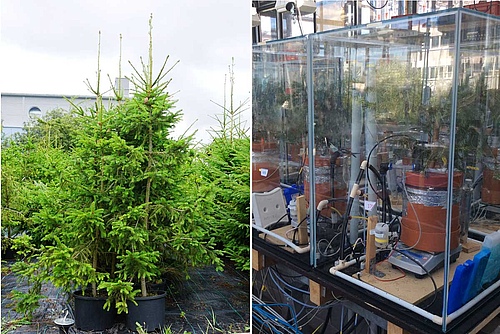Media releases from 2021
all news | only media releases
New findings could improve scientific Earth system models › more
Decrease in growth due to drought stress in 2018 and 2019 › more
Species richness stabilises forests against extreme climate conditions › more
Extremely rare insect species discovered during a field trip › more
Cross-country study on the motivation of citizen scientists › more
New study shows: Europe's grasslands, forests and mountain summits are becoming increasingly similar in species composition › more
Natural restoration of tropical forests provide large short-term benefits for climate change mitigation and biodiversity conservation › more
Historical sources indicate that overfishing of the Baltic herring began over 500 years ago and continues to have an impact today › more
Scientists propose framework for national-level implementation of global biodiversity goals › more
New software predicts the movements of large land animals › more
Global estimate of the importance of pollinators for seed production in plants › more
New computer model helps to better understand species diversity in rainforests › more
Traffic probably poses one of the greatest risks to animal populations. However, we currently know very little about this issue. › more
Study helps to better assess the capacity of global ecosystems to adapt to climate and environmental change › more
An extensive analysis of literature suggests that people seem to be increasingly diconnected from nature › more
Three Minister Presidents pay tribute to international biodiversity research “made in Central Germany”. German Chancellor sends her congratulations › more
Scientists have developed a new way of evaluating rewilding progress › more
Around the world, wildfires are posing major risks to people and nature. Domestic and wild animals can help prevent them › more
New models highlight the important role of glacial refugia for the evolution of chimpanzees › more

Spruces even digest parts of themselves during periods of starvation to ensure long-term survival › more
Taxonomists name a new butterfly genus Setteleia › more
Climate and ecosystem change lead to a global redistribution of wealth › more
iDiv research centre to receive additional millions › more
The new forecourt of the German Centre for Integrative Biodiversity Research (iDiv) in Leipzig invites us to discover, wonder and linger, and arouses interest in the research centre. › more
BUND, UFZ and iDiv are starting a citizen science project on stream monitoring › more
sPlotOpen contains vegetation data from 114 countries of all climate zones › more
Some dragonfly and damselfly species suffer from habitat loss and degradation, while many species benefit from improved water quality and warmer climate › more
Exhibition offers insights into the world of plants and their pollinators. › more
New workshop report on climate and biodiversity offers guidelines for pioneering policies › more
New study challenges the nature of ecological trade-offs › more
Researchers predict massive decline in the range of African great apes over the next 30 years › more
Patterns and drivers of alien plant species invasiveness in Europe identified by an international research team › more
Researchers record adaptability of 158 butterfly species to urbanisation › more
Researchers spent months observing groups of southern pig-tailed macaques › more
Scientists have made proposals for how EU agriculture could turn the tide in favour of sustainability within the next six years › more
Plant occurrence data collected with an app uncovers macroecological patterns in Germany › more
Plantations are home to significantly less beetles than old-growth forests. › more
Award will give research collaboration with iDiv an extra boost. › more
Ensuring sustainability of crop and timber production would mitigate the greatest drivers of terrestrial wildlife decline › more
Even with well-studied species groups such as mammals, there are huge data gaps › more
Study on species diversity and human health in Germany shows positive relation on mental health, but no links to physical health. › more
Researchers investigate for the first time on a global scale how plant populations react to climate change › more
New publication by iDiv member at IPK Leibniz Institute › more
A new large-scale study uncovers recent genetic connectivity between chimpanzee subspecies despite past isolation events › more
Biodiversity doesn’t feature enough in large-scale assessments of ecosystem services › more
Global change alters microbial life in soils - and thereby its ecological functions › more
Climate drivers outside of the growing season may have stronger effects on plants than previously assumed. › more
Biologists study autumn phenology of herbaceous plants › more
Researchers propose necessary corrections in global biodiversity policy › more
Researchers show positive effect of urban nature on mental health › more
